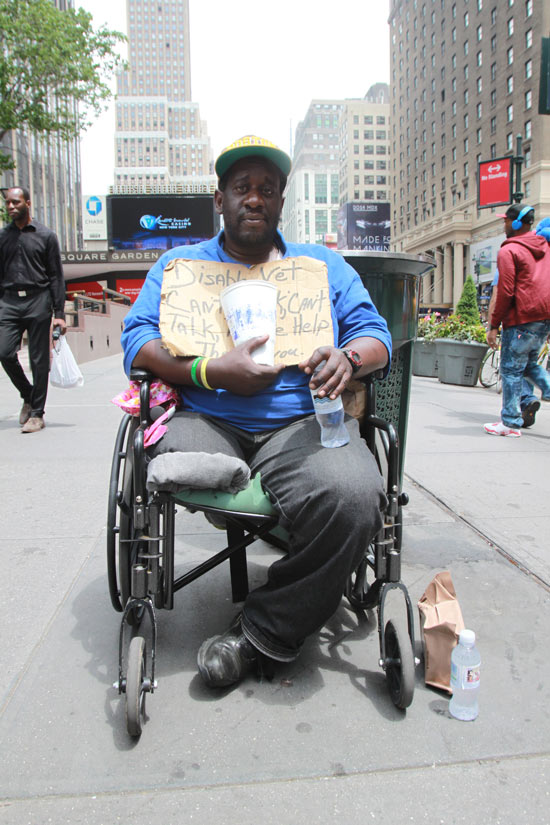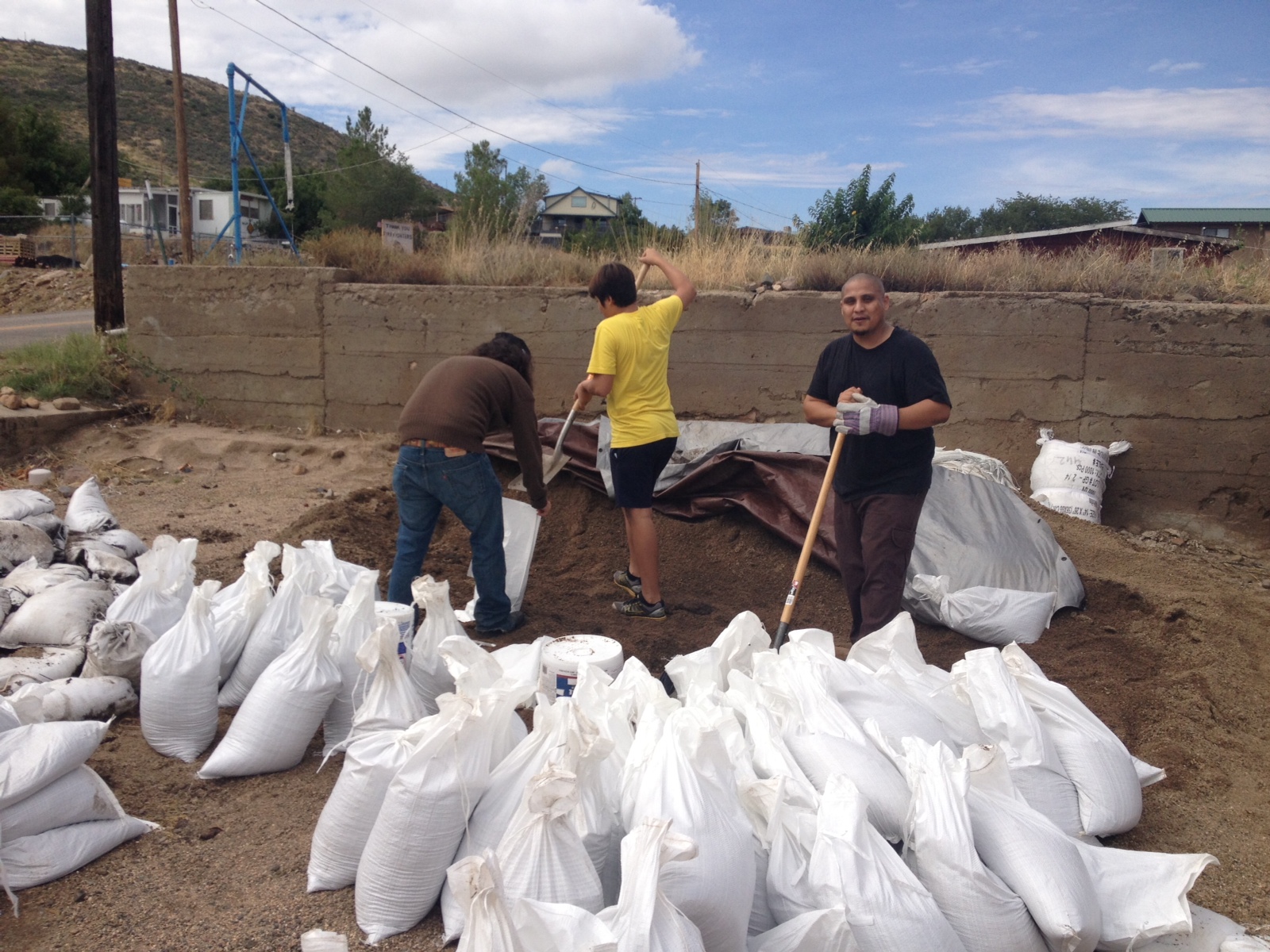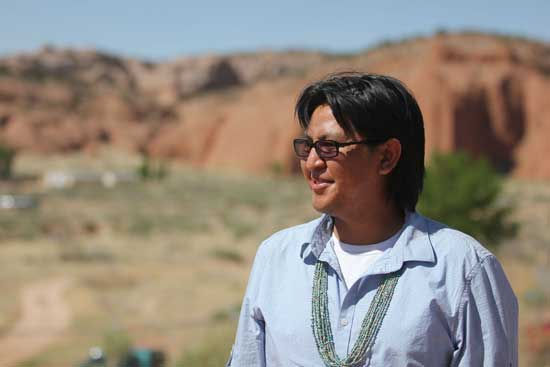By Catey Traylor, News21

Vaughn Little, a Gulf War Army infantryman, lost his leg during Operation Desert Storm. He is now homeless in New York City. (Photo by Catey Traylor, News21)
Vaughn Little was alone, on the streets of New York City. With nowhere to go and no one to turn to, he found some cardboard and a marker and did what he swore he’d never do.
“Disable(d) veteran,” he carefully wrote. “Can’t walk; can’t talk. Please help. Thank you.”
Little sits in his wheelchair at the subway exit on the corner of 31st Street and 7th Avenue, across the street from the Hotel Pennsylvania, silently pleading for spare change.
An Army infantryman during the Gulf War, Little lost the lower portion of his right leg during Operation Desert Storm. He returned to the United States and had a hard time transitioning to civilian life.
He eventually found himself homeless.
Little is just one example of thousands of veterans who return from battle and end up sleeping on the streets they fought to defend.
The count of homeless post-9/11 veterans is unknown, but the increasing rate of homelessness among veterans has been a major concern for the U.S. Department of Veteran’s Affairs since 2009, when VA Secretary Eric Shinseki vowed to end veteran homelessness within five years.
Since then, housing programs have received budget increases to house homeless veterans. Most recently, the VA awarded $300 million in grants to the Supportive Services for Veteran Families program, known as SSVF.
SSVF aims to help veterans before they become chronically homeless by providing money to local organizations to promote housing stability and connect veterans and their families to support services such as mental health care.
“This is the third year SSVF grants have helped veterans and their families find or remain in their homes,” according to a July 11 news release. “Last year, (the) VA provided about $100 million to assist approximately 50,000 veterans and family members.”
More information about SSVF, as well as links to other VA-sponsored homelessness programs is available at www.va.gov/homeless.



